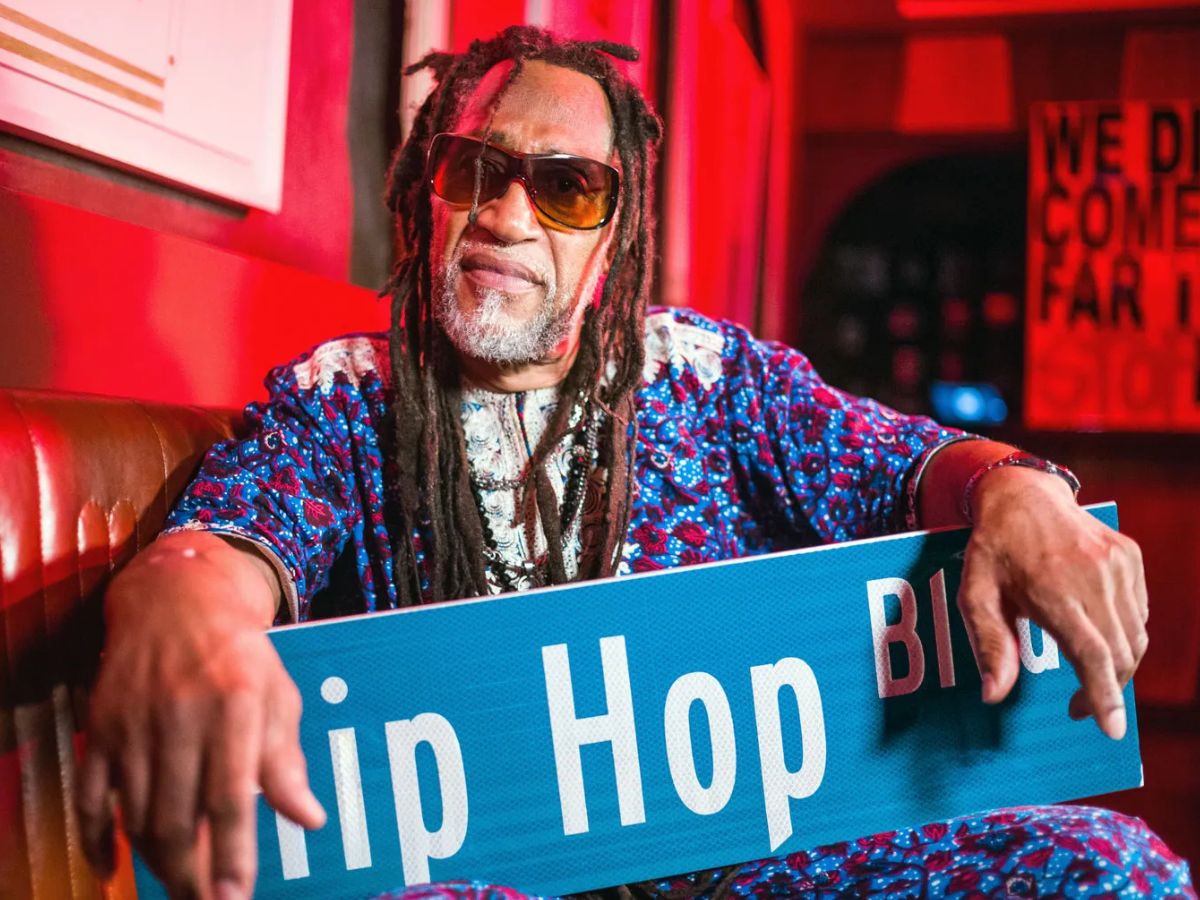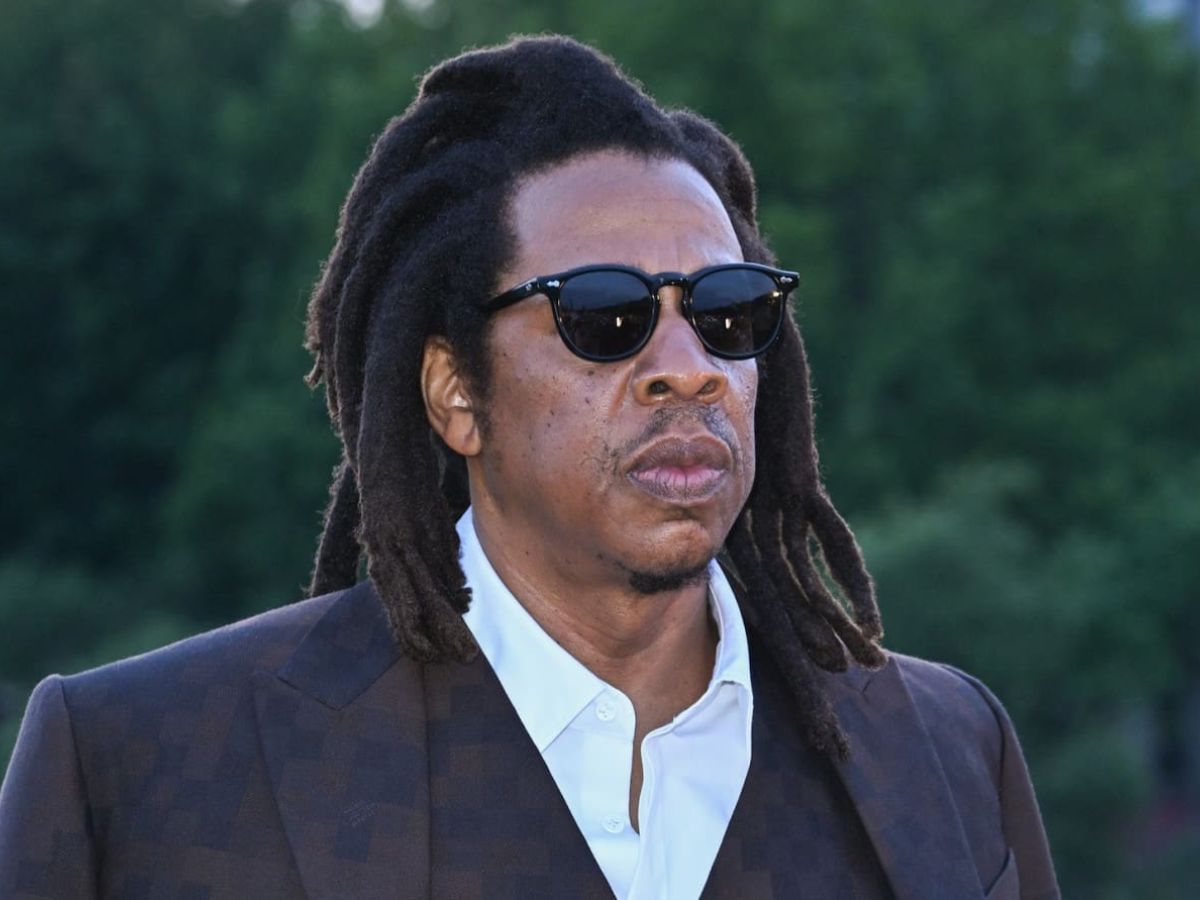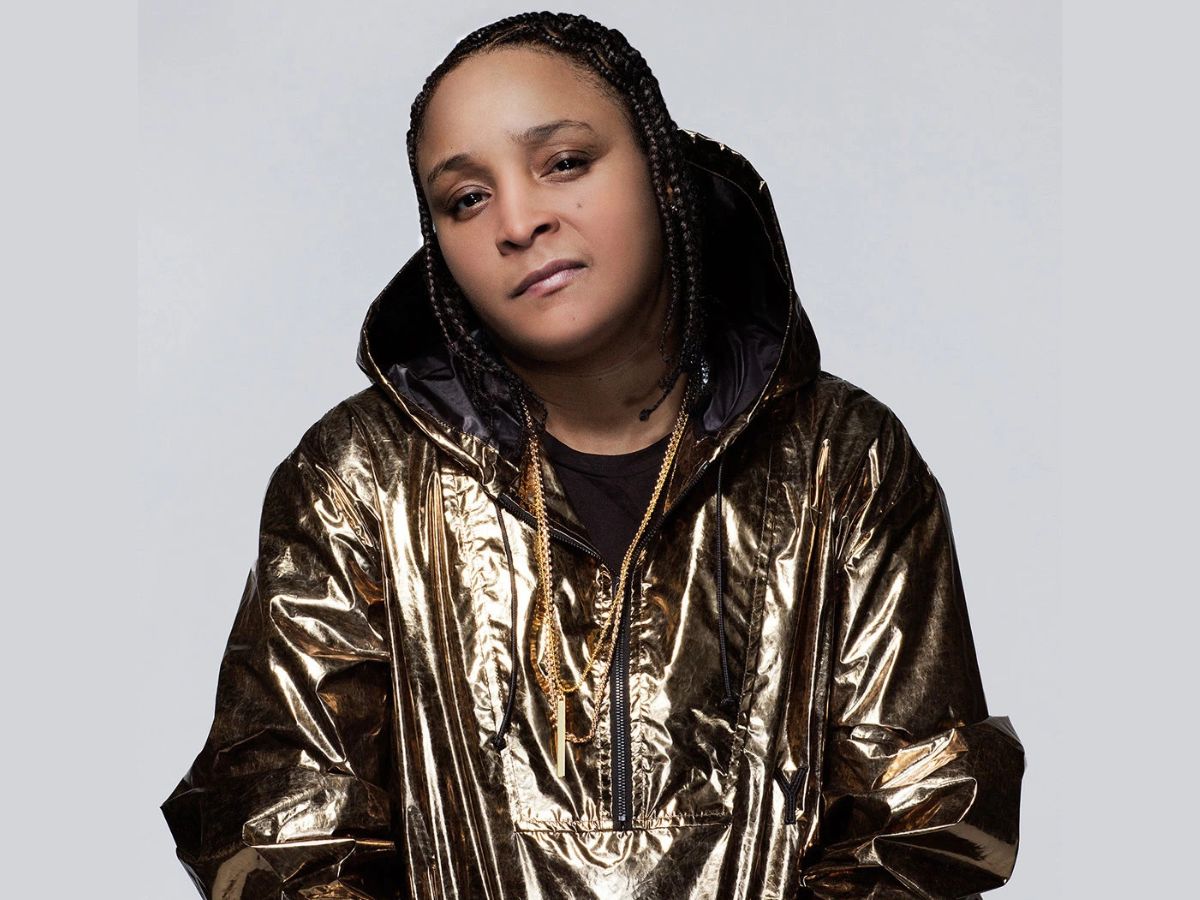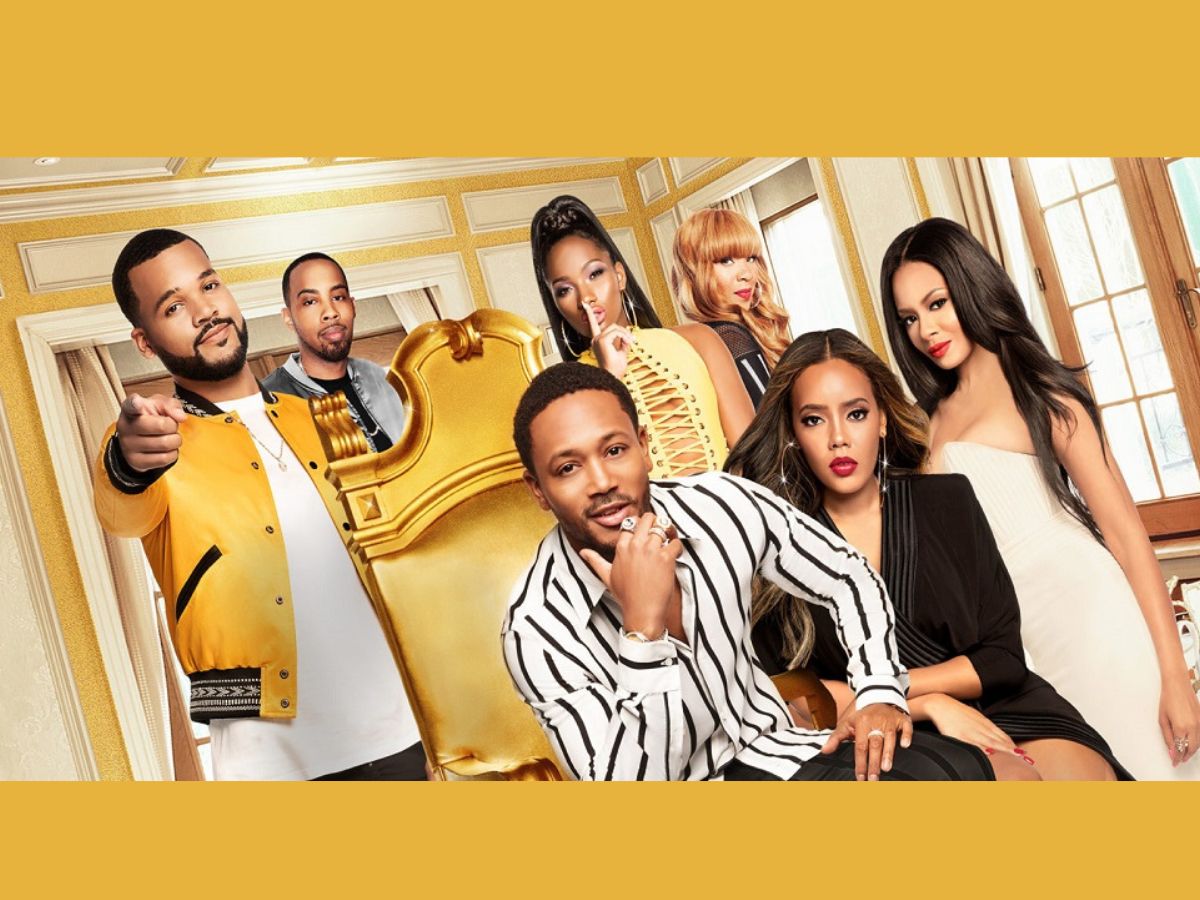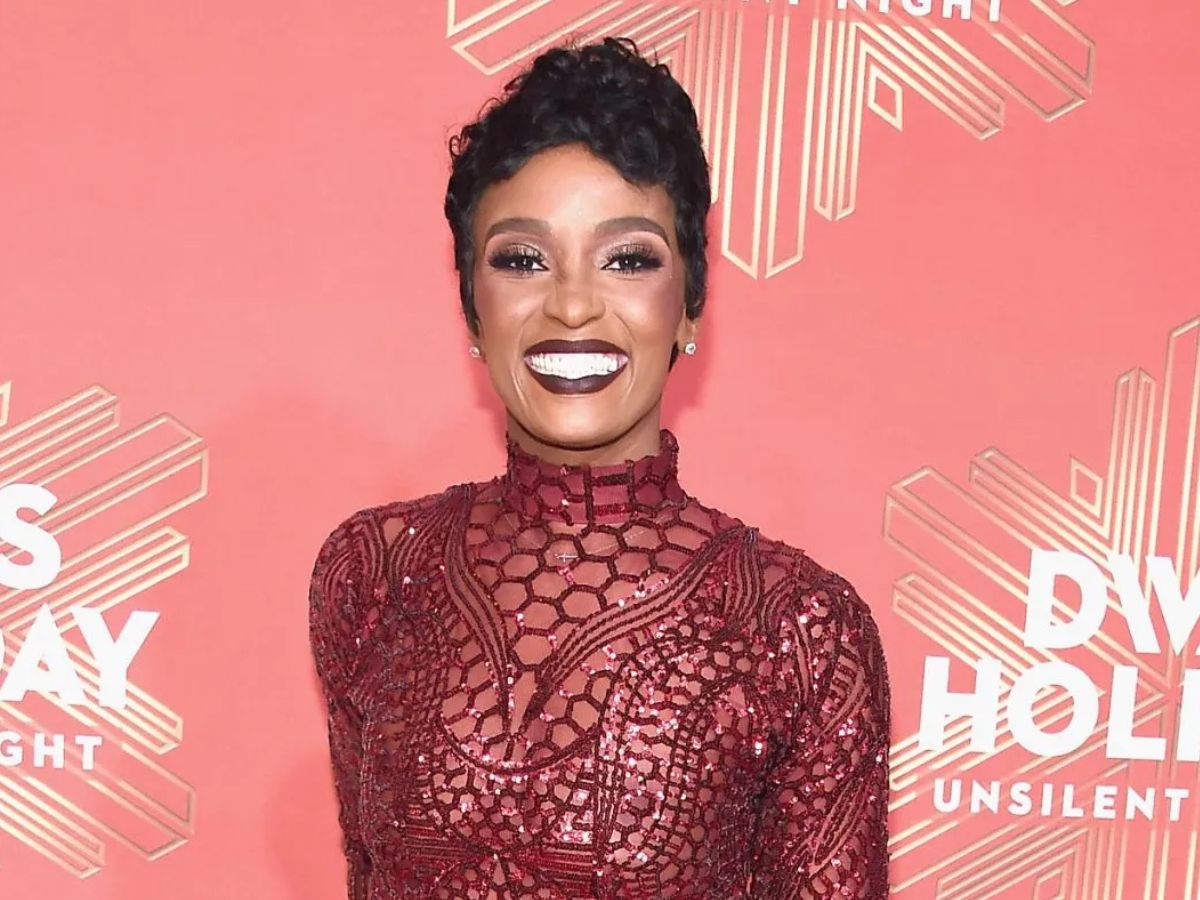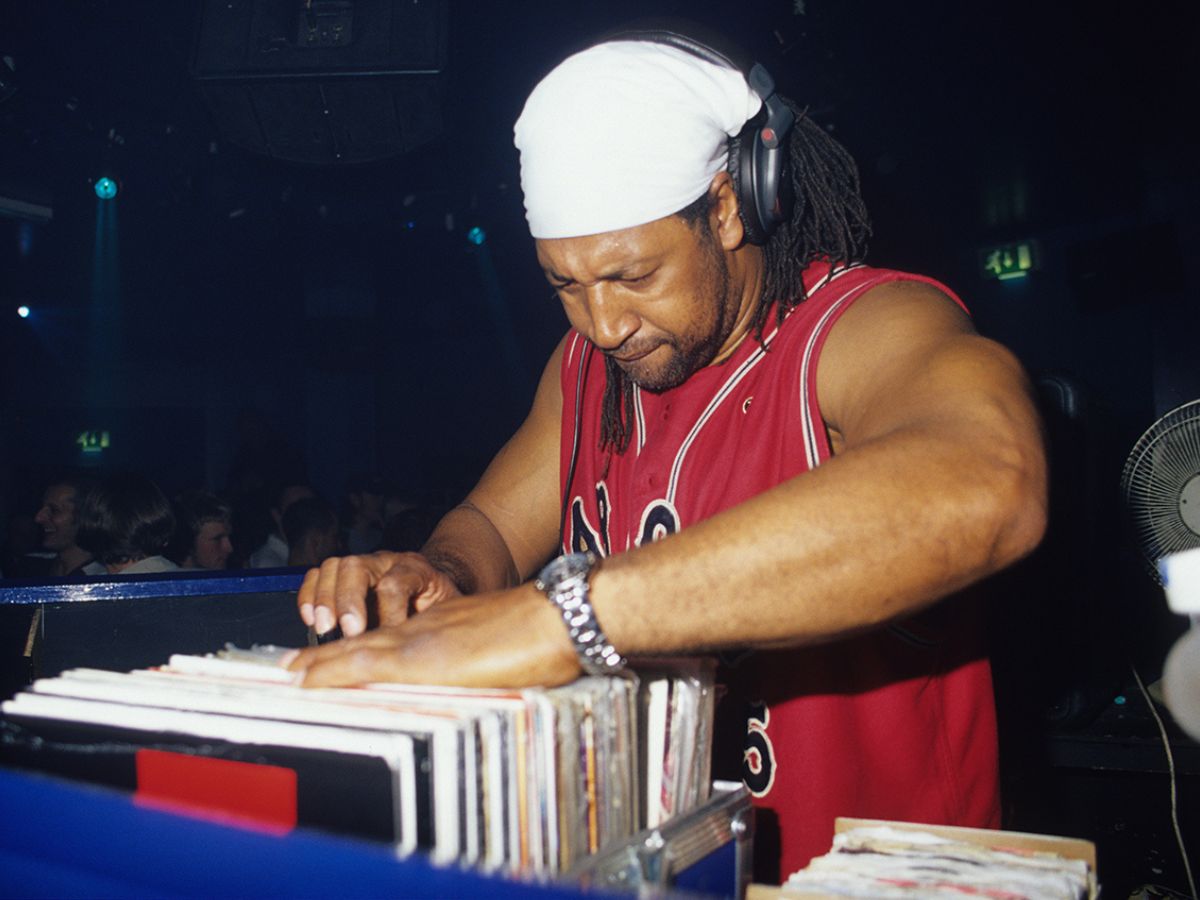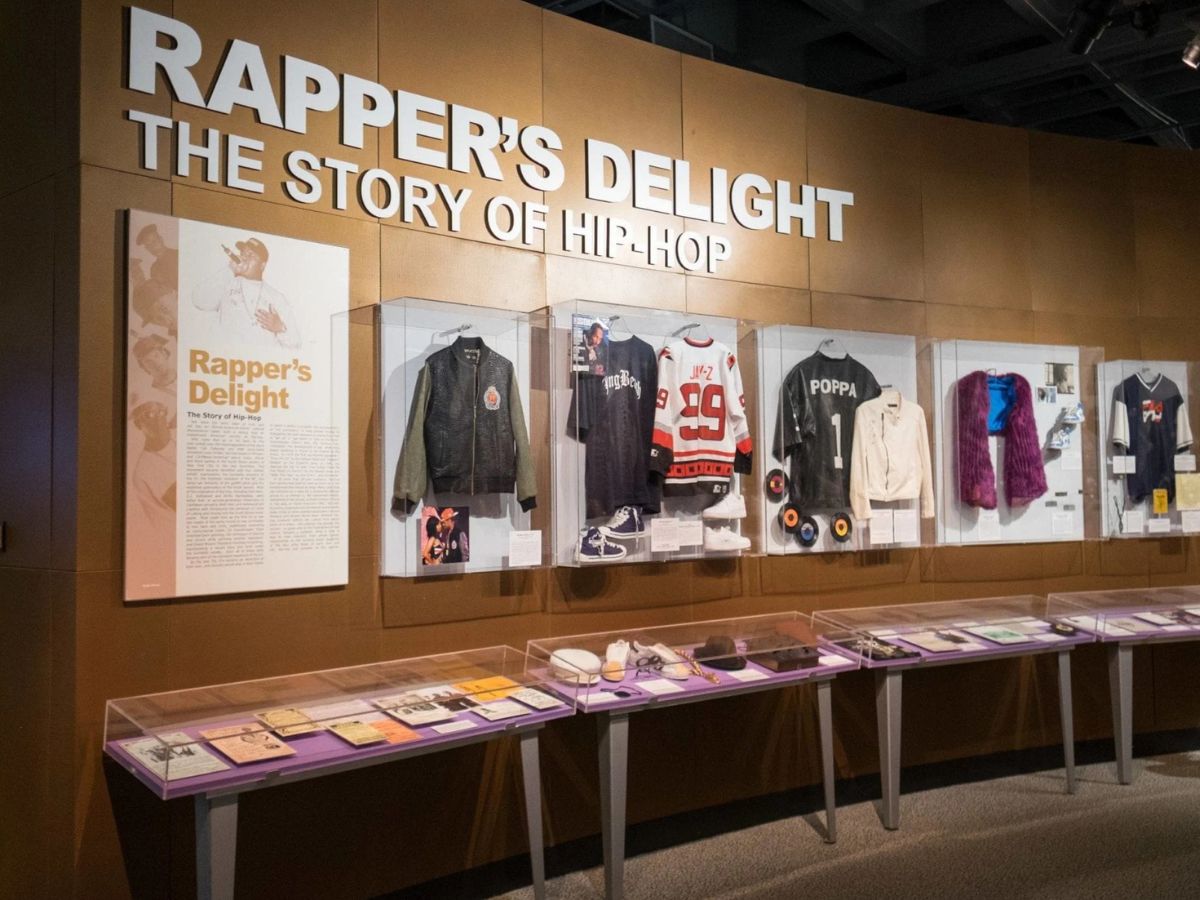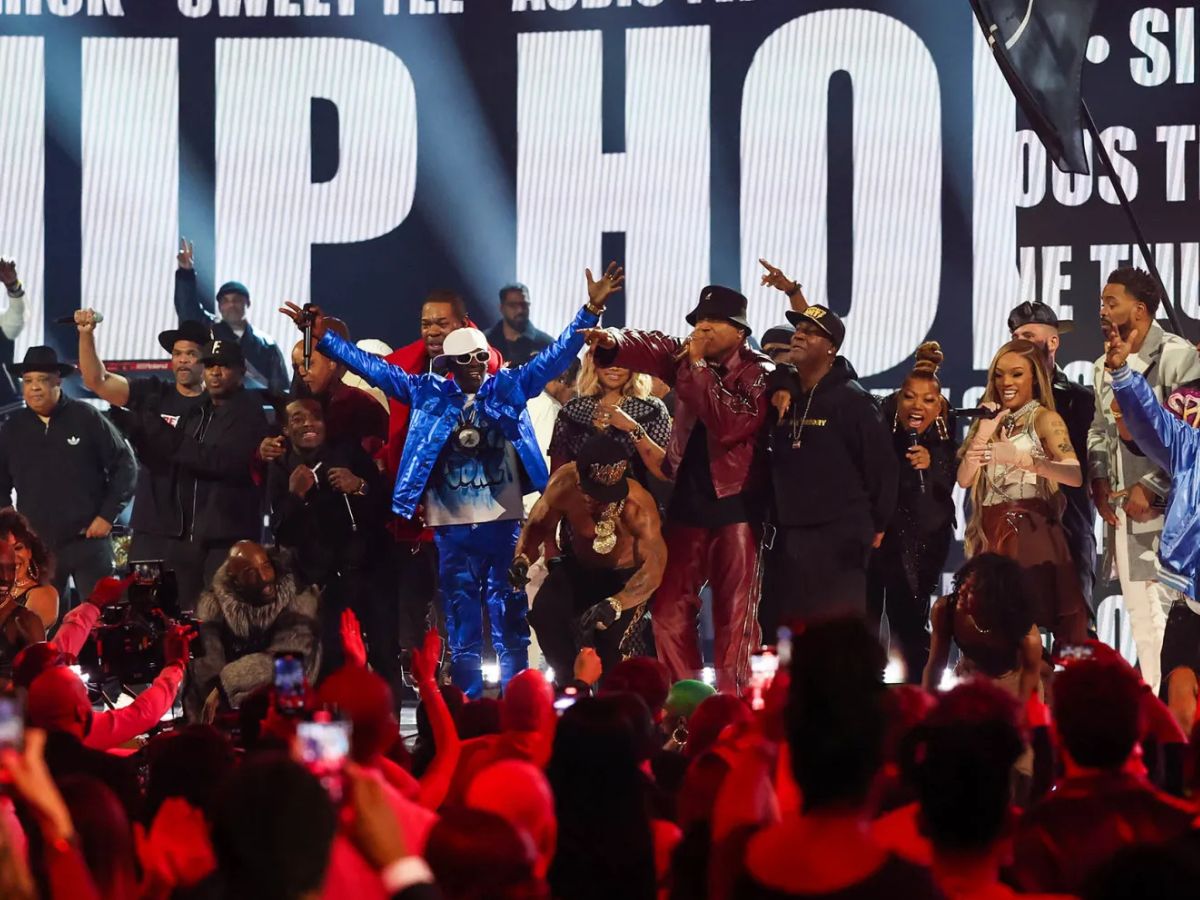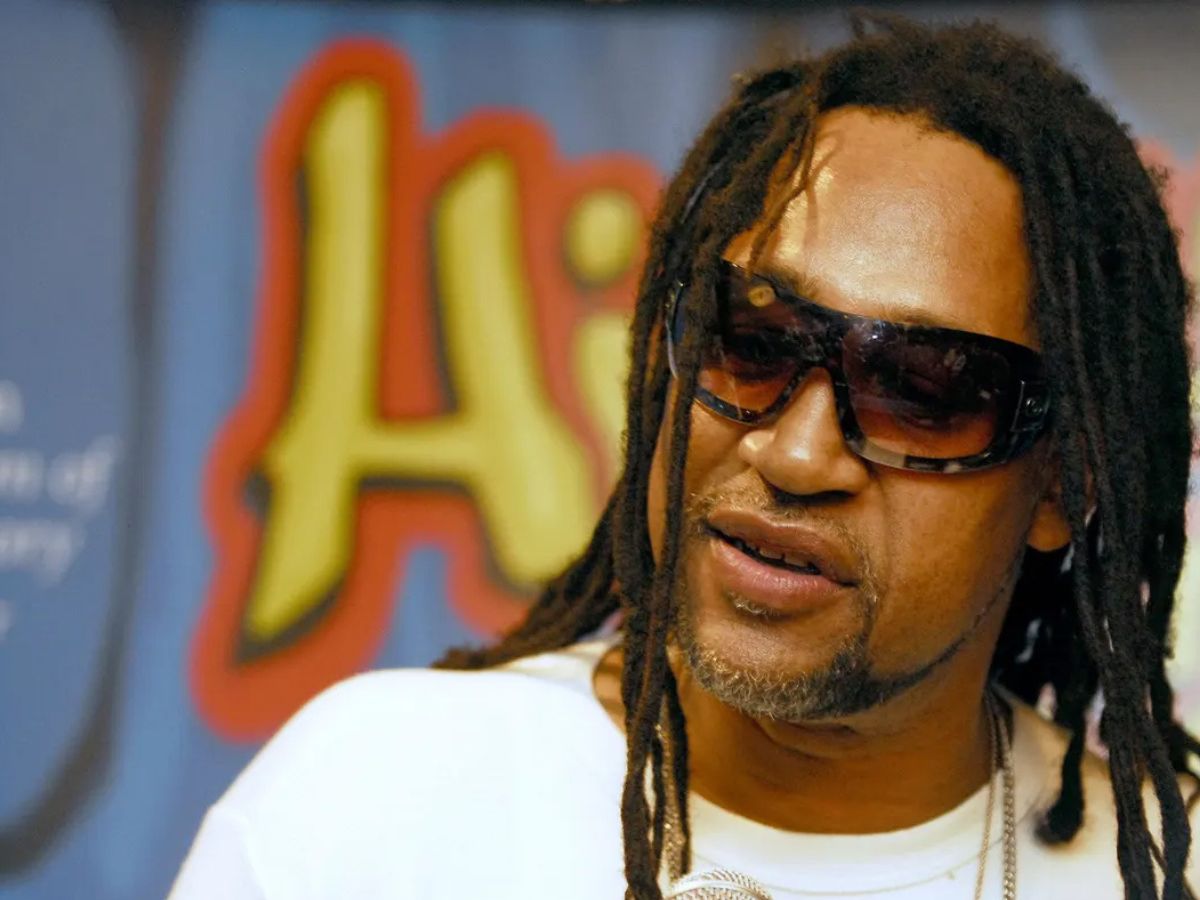

Hip Hop
Who Created Rap And Hip Hop
Modified: March 3, 2024
Discover the origins of hip hop and rap, and the influential figures behind this iconic music genre. Explore the evolution of hip hop and its cultural impact.
(Many of the links in this article redirect to a specific reviewed product. Your purchase of these products through affiliate links helps to generate commission for AudioLover.com, at no extra cost. Learn more)
Table of Contents
Introduction:
Rap and hip hop are two intertwined musical genres that have had a profound impact on culture, art, and society. From its humble origins in the streets of New York City to its global dominance today, rap and hip hop have evolved into a powerful force that transcends borders and connects people from all walks of life.
At its core, rap is a form of musical expression that focuses on spoken words and rhythmic patterns. It emerged in the African American community in the 1970s, providing a platform for individuals to tell their stories, express their emotions, and shed light on social issues. Hip hop, on the other hand, is a cultural movement that encompasses rap music, DJing, breakdancing, and graffiti art. It became a way for marginalized communities to channel their creativity and reclaim their voices.
The early days of rap and hip hop were characterized by block parties, where DJs would mix records and MCs would freestyle over the beats. These gatherings served as a haven for artistic expression and provided a sense of community for those involved. As rap music gained popularity, it started to penetrate mainstream culture, sparking a global phenomenon that continues to shape music and popular culture today.
The pioneers of rap and hip hop laid the foundation for this genre, bringing their unique styles and voices to the forefront. Artists like Kool Herc, Grandmaster Flash, and Afrika Bambaataa revolutionized the way music was made by introducing new techniques such as using multiple turntables and innovative scratching.
As rap and hip hop continued to evolve, artists began to infuse the genre with their own personal experiences, political commentary, and storytelling prowess. This gave rise to iconic figures like Tupac Shakur, The Notorious B.I.G., Public Enemy, and N.W.A., who became household names and used their platform to address social issues and shed light on the realities of marginalized communities.
The influence and impact of rap and hip hop extend far beyond the realm of music. From fashion and slang to dance and visual arts, rap culture has permeated various aspects of society. It has provided a voice for the unheard and a platform for artists to express their creativity authentically.
In today’s music landscape, rap and hip hop continue to dominate the charts and influence popular culture. Artists like Kendrick Lamar, Drake, Cardi B, and Travis Scott have taken the genre to new heights, pushing boundaries and breaking records.
As we delve deeper into the world of rap and hip hop, we will explore its origins, the pioneers who shaped the genre, its evolution over the years, and the lasting influence it has on music and society as a whole.
Origins of Rap:
Rap, as a musical genre, originated in the African American community in the 1970s, primarily in the neighborhoods of the Bronx, New York City. It was born out of a rich cultural mix, influenced by the traditions of African and Caribbean music, as well as spoken word poetry and the rhythmic techniques of jazz and funk.
The development of rap can be traced back to the block parties that were popular in these neighborhoods. DJs, such as DJ Kool Herc, Grandmaster Flash, and Afrika Bambaataa, would set up sound systems and mix records, creating a continuous flow of music that kept the crowd energized. It was during these gatherings that the role of the “MC” or the “Master of Ceremonies” emerged.
The MCs would engage with the audience, hyping them up and keeping the party going with their rhythmic chants and rhymes. They would use their charismatic delivery to interact with the crowd, improvising and freestyling over the beats. This back-and-forth interaction between the DJs and MCs became the foundation of rap as we know it today.
In the early days, rap lyrics were often lighthearted and focused on party themes, boasting skills, and encouraging the crowd to dance. However, as the genre continued to evolve, the lyrical content began to reflect the experiences and realities of the marginalized communities from which it originated.
Rap became an outlet for artists to express their struggles, express their perspectives on social issues, and provide commentary on the inequalities and injustices they faced. It served as a powerful form of self-expression that gave a voice to those who were often ignored or silenced by mainstream society.
One of the defining characteristics of rap is its emphasis on wordplay, rhythmic flow, and lyrical dexterity. Artists would often engage in “battles,” where they would compete with each other to showcase their skills and wit through their lyrics. These battles became an essential part of the rap culture, pushing artists to constantly innovate and elevate their craft.
As rap gained traction and popularity, it started to enter recording studios and found its way onto vinyl records. The release of Sugarhill Gang’s “Rapper’s Delight” in 1979 marked a significant milestone in rap’s history, as it became the first commercially successful rap song. This paved the way for further breakthroughs and the entrance of rap into the mainstream music industry.
The origins of rap are deeply rooted in the cultural and social context of the Bronx in the 1970s. It emerged as a response to the socio-economic challenges faced by marginalized communities and became a powerful medium for self-expression and storytelling. The pioneers of rap laid the foundation for a genre that would go on to revolutionize music and become a global phenomenon.
Emergence of Hip Hop Culture:
The emergence of hip hop culture is closely intertwined with the rise of rap music. As rap gained popularity in the 1970s, it soon became evident that it was more than just a musical genre. It evolved into a cultural movement that encompassed various elements, including rapping, DJing, breakdancing, and graffiti art, giving birth to what we now know as hip hop culture.
Hip hop culture served as a platform for individuals from marginalized communities to express themselves and reclaim their identities. It provided an outlet for creativity, self-expression, and unity, allowing people to connect and find solace in a world that often overlooked their struggles and achievements.
One of the key elements of hip hop culture is DJing. DJs played a crucial role in the early days of hip hop, not only by spinning records at block parties but also by creating innovative techniques and pushing the boundaries of music production. DJs such as Grandmaster Flash and Kool Herc introduced new techniques like scratching, mixing, and sampling, revolutionizing the way music was created and experienced.
Breakdancing, or b-boying/b-girling, is another integral element of hip hop culture. It emerged as a form of street dance that allowed individuals to express their creativity through intricate moves and acrobatic displays. Breakdancing created a sense of competition and camaraderie within the hip hop community, with dancers battling each other to showcase their skills and style.
Graffiti art also played a significant role in hip hop culture, providing a visual representation of the movement’s spirit and energy. Graffiti artists used public spaces as their canvas, using vibrant colors and intricate designs to communicate messages, express their cultural identity, and challenge societal norms. Graffiti became a form of artistic protest and a way for individuals to leave their mark on the urban landscape.
Together, these elements of rap music, DJing, breakdancing, and graffiti art created a vibrant and dynamic culture that challenged the mainstream narrative and provided a voice for those who were often marginalized. Hip hop culture became a way for individuals to celebrate their heritage, share their experiences, and address social and political issues.
Over the years, hip hop culture has undergone changes and adaptations, reflecting the evolving nature of society and artistic expression. It has transcended geographic boundaries and influenced global youth culture, becoming one of the most influential movements of our time.
The emergence of hip hop culture was a profound and transformative moment in history. It created a space for artistic freedom, empowerment, and self-expression, providing a voice for individuals who had been silenced for far too long. Today, hip hop culture continues to thrive, inspiring new generations of artists and paving the way for creativity, resilience, and unity.
Pioneers of Rap and Hip Hop:
The pioneers of rap and hip hop played a crucial role in shaping and popularizing these genres. Their innovation, creativity, and groundbreaking contributions laid the foundation for the global movement we see today. Let’s explore some of the key pioneers who helped pave the way for rap and hip hop:
- Kool Herc: Known as the “Father of Hip Hop,” Kool Herc (Clive Campbell) is credited with creating the blueprint for DJing and laying the groundwork for rap music. He pioneered the use of two turntables and the “breakbeat” technique, where he extended instrumental sections of records to create looping rhythms that dancers could groove to.
- Grandmaster Flash: DJ Grandmaster Flash (Joseph Saddler) is renowned for his innovative DJing techniques and contributions to the development of hip hop. He perfected the art of mixing records and introduced techniques like backspinning and cutting, pushing the boundaries of what could be achieved with turntables.
- Afrika Bambaataa: Afrika Bambaataa (Kevin Donovan) is often referred to as the “Godfather of Hip Hop.” He played a crucial role in the development of hip hop culture by organizing block parties and forming the Universal Zulu Nation, a collective focused on community empowerment through music, dance, and knowledge.
- The Sugarhill Gang: The Sugarhill Gang, consisting of Wonder Mike, Big Bank Hank, and Master Gee, made history with their iconic hit “Rapper’s Delight” in 1979. It was the first rap song to achieve commercial success and introduced rap music to a wider audience, propelling the genre into the mainstream.
- Run-DMC: Run-DMC, composed of Joseph “Run” Simmons, Darryl “D.M.C.” McDaniels, and Jason “Jam Master Jay” Mizell, revolutionized rap by infusing rock elements into their music. They became the first rap group to achieve mainstream success, earning them a place in music history and influencing generations of artists to come.
- Tupac Shakur: Tupac Shakur was not only an influential rapper but also a cultural icon. His powerful and introspective lyrics addressed social issues, systemic injustices, and the realities of urban life. Tupac’s impact extended far beyond music, as he became an advocate for change and an inspiration for generations.
- The Notorious B.I.G.: Christopher Wallace, also known as The Notorious B.I.G., is regarded as one of the greatest rappers of all time. His storytelling abilities and unique flow captured the attention of listeners worldwide, and his tragic death added to his legendary status.
These pioneers and many others laid the groundwork for rap and hip hop, pushing boundaries, and challenging the status quo. They paved the way for the diverse voices and expressions we see in rap and hip hop today, ensuring that the cultural movement remains dynamic, influential, and ever-evolving.
Evolution of Rap and Hip Hop:
Since its origins in the 1970s, rap and hip hop have undergone a remarkable evolution, both sonically and culturally. This evolution can be seen in the stylistic changes, lyrical themes, production techniques, and the overall impact it has had on popular culture. Let’s explore the key phases of the evolution of rap and hip hop:
- Golden Age (1980s-1990s): The Golden Age of rap and hip hop is often regarded as a period of innovation, introspection, and artistic growth. Artists began experimenting with different sounds, sampling diverse genres, and incorporating more complex lyricism. This era witnessed the rise of influential figures such as Public Enemy, N.W.A., Wu-Tang Clan, and A Tribe Called Quest, who brought social and political consciousness to the forefront of their music.
- Gangsta Rap and Mainstream Success (1990s-2000s): The 1990s saw the emergence of gangsta rap, characterized by its gritty storytelling and explicit lyrics. Artists like Dr. Dre, Snoop Dogg, and Tupac Shakur pushed the boundaries of rap, exploring themes of street life, violence, and socio-economic struggles. Additionally, this era witnessed rap’s mainstream success, with artists like Jay-Z, Nas, and Eminem achieving commercial dominance and crossing over to mainstream charts.
- Alternative and Conscious Rap (2000s-2010s): The 2000s and 2010s saw a shift in the rap landscape, with the rise of alternative and conscious rap. Artists like Kanye West, Common, and Kendrick Lamar brought introspection, vulnerability, and social commentary to their music, tackling topics such as social inequality, mental health, and personal growth. This period also witnessed the emergence of sub-genres like trap and drill, characterized by heavy beats and catchy melodies.
- Expansion and Global Influence (2010s-Present): In recent years, rap and hip hop have expanded globally, transcending geographic boundaries and gaining recognition in various cultures. International artists like JAY-Z, Drake, and Cardi B have achieved immense success, further solidifying rap’s place as a dominant force in the music industry. Additionally, the digital era and the advent of streaming platforms have allowed upcoming artists to gain exposure and build fan bases independently.
The evolution of rap and hip hop is not only reflected in the music but also in the culture surrounding it. It has become a driving force in fashion, influencing trends and shaping personal styles. Rap and hip hop have also become platforms for activism, with artists using their platform to advocate for social justice, equality, and positive change.
The future of rap and hip hop is undoubtedly bright, as artists continue to push boundaries, experiment with new sounds, and tell compelling stories. This dynamic genre continues to evolve and adapt, reflecting the ever-changing world we live in while providing a voice and platform for marginalized communities.
Influence and Impact of Rap and Hip Hop:
Rap and hip hop have had a profound influence on various aspects of culture, art, and society. From shaping music trends to influencing fashion, language, and social movements, the impact of rap and hip hop is undeniable. Let’s explore some of the key ways in which this genre has left its mark:
- Musical Influence: Rap and hip hop have impacted the music industry in monumental ways. It has become a dominant genre, consistently topping charts and breaking records. Elements of rap and hip hop can be heard in various genres, from pop to R&B and even rock, contributing to the evolution and diversification of contemporary music.
- Cultural Representation: Rap and hip hop have provided a voice and platform for marginalized communities worldwide. It allows artists to share their stories, address social issues, and shed light on experiences often overlooked by mainstream media. The genre has become a powerful means of representation and empowerment, offering a space for individuals to express their identity, struggles, and triumphs.
- Social Commentary and Activism: Rap and hip hop have been instrumental in providing social commentary and inspiring social change. Artists use their lyrics to highlight issues such as police brutality, race inequality, poverty, and political corruption. The genre has become a catalyst for activism, sparking conversations and movements that strive for positive societal transformation.
- Fashion and Style: Rap and hip hop have heavily influenced fashion, setting trends and redefining personal style. From oversized clothing, gold chains, and sneakers to embracing luxury brands, artists within the genre have become fashion icons. The blend of streetwear and high-end fashion has become synonymous with rap culture, showcasing its impact on the fashion industry.
- Language and Slang: Rap and hip hop have introduced unique vocabulary, slang, and expressions into mainstream culture. The lyrical wordplay, poetic metaphors, and rhythmic flow have influenced the way people communicate and express themselves. This linguistic influence can be seen in everyday conversations, advertising, and even academic research.
- Economic Influence: Rap and hip hop have also had a significant economic impact. It has created opportunities for artists, producers, and entrepreneurs within the industry. The genre has fueled a multimillion-dollar industry that spans music production, fashion, merchandise, endorsements, and live performances.
Rap and hip hop have transcended borders, race, and language, becoming a global cultural phenomenon. The genre has connected people from diverse backgrounds, fostering a sense of unity and shared experiences. It has acted as a bridge, breaking down barriers and fostering understanding and empathy among different communities.
While rap and hip hop have faced criticism for some of its lyrical content, it is important to recognize its power as a form of artistic expression and social commentary. The genre has sparked conversations, challenged societal norms, and given marginalized communities a platform to be heard.
The influence and impact of rap and hip hop continue to grow, shaping the future of music, art, and global culture. It serves as a reminder of the enduring power of music to inspire, educate, and bring about positive change.
Contemporary Rap and Hip Hop Scene:
The contemporary rap and hip hop scene is a dynamic and ever-evolving landscape, showcasing the diverse voices, styles, and innovations within the genre. Artists continuously push boundaries, experiment with new sounds, and bring fresh perspectives to the table. Let’s explore the key aspects of the modern rap and hip hop scene:
- Diverse Voices: The contemporary rap and hip hop scene embraces diversity, with artists from various backgrounds and identities making their mark. Artists are unafraid to share their unique narratives, bringing forth personal experiences, cultural influences, and societal reflections. This diversity of voices contributes to the genre’s richness and ensures that a broad range of stories are told.
- Genre Fusion: Contemporary rap and hip hop artists are increasingly exploring genre fusion, merging rap elements with other musical styles. This experimentation results in an exciting blend of sounds, such as rap-rock, trap-pop, and Afrobeat infused rap. This fusion helps to expand the boundaries of the genre and attracts listeners from different musical backgrounds.
- Lyricism and Storytelling: Many contemporary rap and hip hop artists prioritize intricate lyricism and storytelling. They use their songs to convey personal struggles, societal issues, and emotional depth. This focus on meaningful lyrics and storytelling allows listeners to connect on a deeper level and provides a refreshing alternative to the mainstream’s superficiality.
- Independent and DIY Culture: The rise of digital platforms and social media has given rise to a thriving independent and do-it-yourself (DIY) culture within rap and hip hop. Artists can now release music independently, build their fan bases organically, and connect directly with their listeners. This independent culture allows for greater artistic freedom and creativity.
- Cutting-Edge Production: The contemporary rap and hip hop scene are marked by cutting-edge production techniques and innovation. Producers create intricate beats, experiment with unique sounds, and blend genres to create a fresh sonic experience. This emphasis on production quality helps shape the overall aesthetic and appeal of the music.
- Social Media and Digital Influence: Social media platforms like Instagram, Twitter, and TikTok have had a significant impact on the rap and hip hop scene. Artists can engage directly with their fans, build personal brands, and promote their music to a global audience. Digital platforms have also democratized access to music, allowing aspiring artists to share their work and gain exposure.
The contemporary rap and hip hop scene is a testament to the genre’s ongoing evolution and its ability to reflect and respond to the cultural shifts of our time. Artists continue to innovate, challenge norms, and provide a platform for social commentary and self-expression.
Notable artists in the modern rap and hip hop scene include Kendrick Lamar, Drake, Cardi B, Travis Scott, Megan Thee Stallion, J. Cole, and many more. These artists have achieved mainstream success while maintaining artistry and integrity, pushing boundaries, and resonating with audiences worldwide.
The contemporary rap and hip hop scene offers a wide array of styles and messages, ensuring that there is something for every listener. It continues to captivate audiences, shape popular culture, and inspire future generations of artists.
Conclusion:
Rap and hip hop have come a long way since their humble beginnings in the streets of New York City. What started as a local movement in the 1970s has evolved into a global cultural force, influencing music, fashion, language, and social movements. The pioneers of rap and hip hop laid the foundation for this genre, bringing their unique styles, voices, and innovations to the forefront.
Through the years, rap and hip hop have continuously evolved, reflecting the changing times and societal shifts. The genre has given voice to the marginalized, providing a platform for artistic expression, social commentary, and activism. It has sparked conversations, challenged stereotypes, and pushed the boundaries of creativity.
The impact of rap and hip hop extends far beyond the realm of music. It has influenced fashion trends, language, and the way we perceive and understand issues of race, identity, and social injustice. The diversity of voices within the genre has allowed for a range of perspectives and experiences to be shared, fostering understanding and empathy among listeners.
Contemporary rap and hip hop artists are pushing the genre in new directions. They fuse musical styles, experiment with production techniques, and prioritize intricate lyricism and storytelling. Social media and digital platforms have transformed the way artists connect with audiences, enabling independent artists to carve out their own paths and reach a global fan base.
The future of rap and hip hop holds even more promise and potential. It will continue to evolve, adapt, and break down barriers, amplifying underrepresented voices and championing social change. It will inspire generations to come, empowering them to express their truth, challenge the status quo, and leave their mark on the world.
In conclusion, rap and hip hop have revolutionized the music industry and had a profound impact on culture, art, and society. These genres have given a voice to those marginalized and silenced, providing a platform to express their experiences, struggles, and triumphs. From its origins on the streets of New York City to its global dominance today, rap and hip hop have truly become universal languages, connecting people of all backgrounds and transcending borders.

